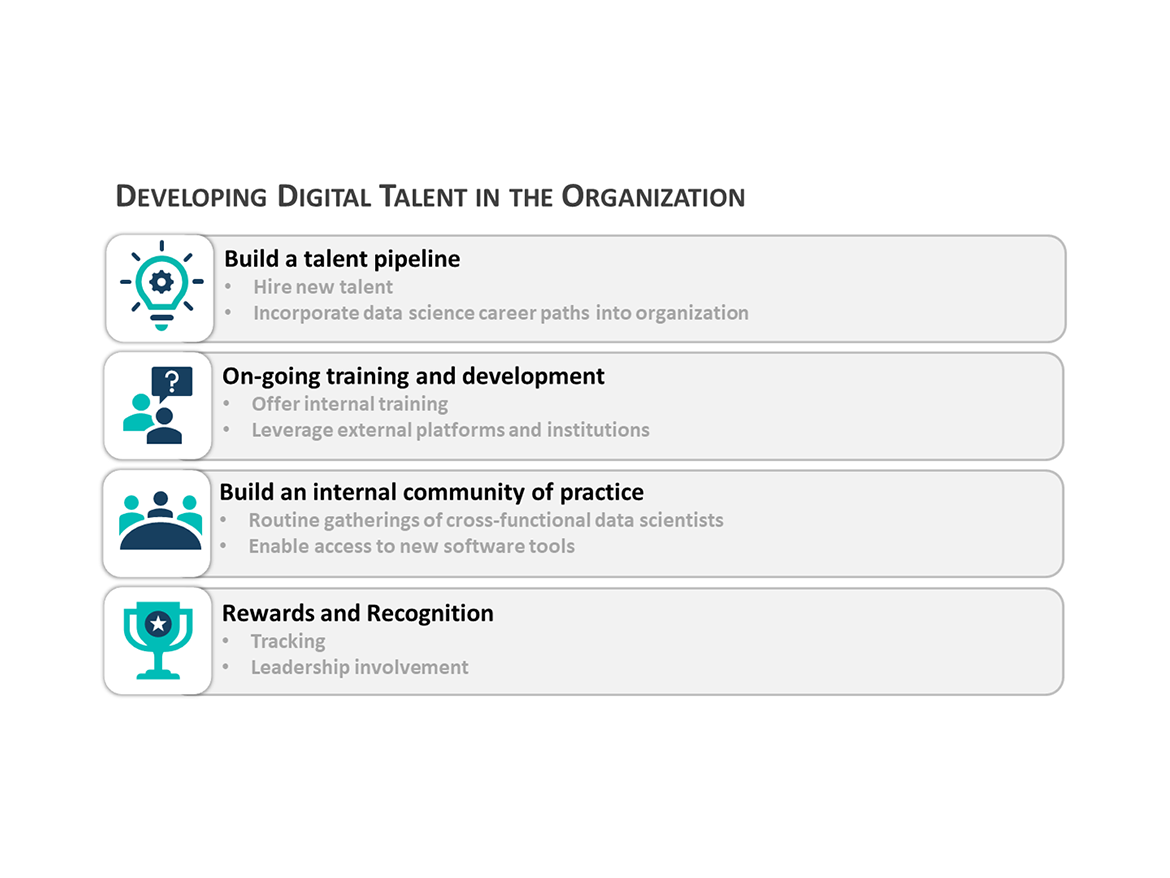How to Build a Successful Foundation for a Digital Formulation Program
Navigating the Future of the Paint and Coatings Industry

The paint and coatings industry is in the midst of a digital transformation. Powerful new data-driven capabilities are rendering the traditional paint formulation process obsolete. Rather than undertaking lengthy empirical processes to create product lines, formulators can now harness the power of digital platforms. These support informed decisions, accelerate innovation, save time, conserve resources, and enhance efficiency.
However, the transition from manual to digital formulation is far from simple. The creation of a digital lab is a multi-step process that demands a sound strategy. How can you set your organization up for success as you create this new reality? This article offers insights into achieving digital transformation in a traditional industry, including strategic vision, team building, governance, talent development, and value demonstration.
The Crucial Role of Strategic Vision and Leadership Support in Digital Transformation
Every company has its own culture and environment. There’s no one-size-fits-all playbook for digital transformation. But leadership — essential to driving change and making investment decisions — always plays a key role. Before a company can embark on a digital transformation journey, leaders must articulate a clear vision that’s aligned with their organizational goals.
Start with the fundamentals. What are you trying to achieve as an organization? How does digitalization align with broader goals? For example, your company may be prioritizing technology uplift, increased innovation, faster time to market — or all of the above. Buy-in from leadership is more likely when you can show how digitalization supports established business strategy and priorities.
Once you’ve gained the buy-in you need, how do you secure resource commitments? Two words: Demonstrate value.
It’s challenging to name a concrete dollar value at the initial stages of the digitalization journey. Instead, focus on the speed it will enable, the redundancies it will remove, or the greater number of addressable R&D projects.
Strategies for making the case for the value of a digitalization program include:
- Leveraging case studies1 that help evaluate how digital transformation could enhance your R&D operations, potentially increasing efficiency and competitiveness.
- Explaining the risk of inaction and using industrial benchmarks2 to create a specific call to action for leadership.
- Linking the value creation with the organization’s business strategy by demonstrating how digital technology can enable that strategy.
Harnessing Collective Wisdom: The Importance of a Diverse Team of Stakeholders
Consider forming a steering team to create a roadmap for digitalization. This might include members of your information technology organization, R&D team, commercial, and marketing colleagues. Business stakeholders help build value, secure support, and bring clarity to your plans.
Change Management: Advancing the Organization Together
Based on Prosci Change Management Methodology, in any organization, an active and visible sponsor is the most important aspect of change management. Ensure that high-level leadership in your organization is supportive of the digitalization program and visibly engaged. While there’s no single approach to digital transformation, here’s one framework for change management:
- Ownership: Involve affected team members with specific roles and responsibilities early, have researchers define their methods and priorities, and provide quick turnaround on feedback.
- Value: Measure the time-saving impact that new capabilities are having in the lab, develop easy-to-use dashboards for data analysis, remove barriers to data entry and decrease the number of tools needed.
- Communication: Repeat messaging at all levels through many modes of communication through group meetings, business updates, and manager discussions, while making information available and transparent through internal collaboration channels.
Data Governance: Navigating the Path to Effective Data Management
Data governance is an essential component of effective data management. There’s no single right way to approach governance, but you’ll want to consider different levels of your organization from a security and configuration perspective. The shared objective: Enable data that is accurate, consistent, and trustworthy, and that can be leveraged for decision making and achieving business outcomes.
A common approach to data governance includes these entities:
- Enterprise: At this level, decision makers set policies about capabilities and access. For instance, what IT and database infrastructure will you use? What external vendors may you partner with? What are your security policies? Software development and maintenance are often overseen at the enterprise level.
- Business: The business defines customizations and user needs, and determines how sensitive data is (i.e., what you can and cannot put in the cloud). This is where your organization will likely address data stewardship: who oversees it, structures it, and ensures its quality.
- Researchers: Individual users, researchers, and groups typically determine operating procedures and define test methods. They take responsibility for consistency and instrument calibrations, with the goal of minimizing variability from one researcher to the next. They also ensure the quality of procedures and data.
Digital Talent Development: Building Expertise for a Digital Future
Materials science is a traditional field, and the journey to digital formulation represents an evolution. To be successful, you need talent who understand both chemical materials science and data science. Depending on who you speak to, it may be easier to train chemical engineers to become computer scientists rather than the reverse.
Here's one pathway that has shown to be effective:

Lessons Learned on Dow’s Journey to Digitalization
Digital paint formulation is a complex, evolving field. Dow Coating Materials embarked on the journey in 2018, starting with the construction of a robust data foundation. This crucial process involved digitalization, automation, centralization, and test-method standardization. These efforts support reliable and consistent data, laying the groundwork downstream for advanced analytics, artificial intelligence, and other digital technologies. The insights gained from this process led to the creation of the award-winning platform, DOW™ Paint Vision. This innovative online tool combines scientific insights, expertise, and cutting-edge technology to modernize the field of paint formulation.
This process brought about significant changes in the day-to-day operations of Dow scientists, necessitating extensive change management to facilitate capability adoption and transition. These efforts continue to be a significant part of the Dow Coating Materials team’s work today.
Here are six lessons learned on this five-year journey:
- Start simple: Successful data management is complex. It’s better to start anywhere and then iterate, refine, and increase scope. There is never a right time, and there is never a perfect solution, so just start with a narrow scope to make tangible progress. Along the way, be transparent. Make information readily available through online collaboration channels, and stay realistic about expectations. Don’t oversell the capabilities of digital formulation.
- Engage end-users often: The end-user will ultimately determine the level of success of any digitalization initiative. Include these subject matter experts early and encourage them to feel ownership of initiatives. To build excitement, share case studies of colleagues saving time or developing new capabilities. Designate program champions who will socialize your efforts and share successes with colleagues.
- Remove artificial barriers: Simplify the number of tools researchers must use in their day-to-day to improve the employee experience. Ensure tools are broadly accessible and available from lab environments.
- Provide incentives: Always keep in mind that you’ve embarked on a human process. Use tracking tools to reveal who’s using the system most often and recognize those people. Foster a learning mindset at all times, and ensure that the new capabilities save researchers’ time.
- Stay informed: New technologies are rapidly developing and changing. Revisit new offerings and capabilities, and adapt your strategy as new tools become available. To further this internally, create a community of practice that includes training resources on the new systems and technology you’re introducing.
- Plan for the long term: When planning your data management strategy, factor in redundancies and backups. Be cognizant of end-to-end workflows that depend on a single vendor or software application. Ensure your data structures can be leveraged by other tools or technologies.
Embark on Your Own Journey
The benefits of digital paint and coatings formulation can’t be overstated. Data-driven insights and solutions accelerate innovation and product development. By replacing traditional empirical methods with data-supported approaches, a digital lab saves time and resources. These gains in efficiency propel faster times to market and deliver a measurable competitive advantage. Whether you’re a leader at a global organization or a small company, the future of formulation has arrived. Now is the time to invest in digital transformation and advance the paint and coating industry together.
*All images and graphics courtesy of Dow.
References
1 Kern, T.; Andrasec, E.K.; Urh, B.; Senegacnik, M.. (2020, July 21). Digital Transformation Reduces Costs of the Paints and Coatings Development Process. Coatings 2020. https://www.mdpi.com/775284.
2 Bratel, C.M.; Herman, M. The Hidden Cost of Inaction. (2023, July 10). https://www.bakertilly.com/insights/the-hidden-cost-of-inaction.
3 Creasey, T. Primary Sponsor's Role and Importance. Pro Sci 2023. https://www.prosci.com/blog/primary-sponsors-role-and-importance#:~:text=They%20give%20the%20change%20credibility,activities%20as%20only%20they%20can.
Looking for a reprint of this article?
From high-res PDFs to custom plaques, order your copy today!







